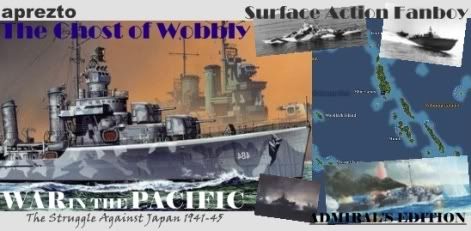On 17 Oct 1942 in simulation time, a digital submarine under computer control hit a digital mine near the simulated Japanese controlled port of Pusan. This was no great setback, for this Salmon-class submarine was worth only 8 victory points for the AI compared with the tens of thousands each side would accumulate over the course of the simulation. I did not know whether the submarine had reacted into a minefield or the AI had assigned it a patrol area that intersected one. In my game journal (this was my first campaign game against any opponent, and I expected that there would be many lessons learned) I recorded simply “Allied SS hits a mine at Pusan (Seal).” And that would have been the extent of the recorded war career of the Seal had my daughter not been sitting next to me waiting for the turn to end [so that I could save the game and start up Hearoes of Might and Magic IV (we had a collaborative team game going – HOMM4 is more to her liking than WITPAE).]
“The Seal’s hit a mine and I’m probably going to lose it” I remarked.
“Was it a harp seal?”
“Uhhh…”
“Was it a baby harp seal?”
Suddenly my daughter had an interest in a very small part of my epic struggle against the Japanese. And so here is the war history of my USS Seal, collected from my notes and the saved combat reports, interleaved with the real history of this ship and my imagination.













